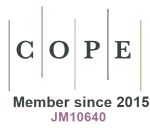Downloads
How to Cite
Woo, J., Sharma, S., & Gimzewski, J. (2016). The Role of Isolation Methods on a Nanoscale Surface Structure and its Effect on the Size of Exosomes. Journal of Circulating Biomarkers, 5(1). https://doi.org/10.33393/jcb.2016.2079
Issue
Section
Original research article
Statistics
- Abstract views - 1385 times
- PDF downloads - 716 times
Sign up
banners150
Most popular articles in the last 30 days
-
209
-
202
-
160
-
120
-
98









